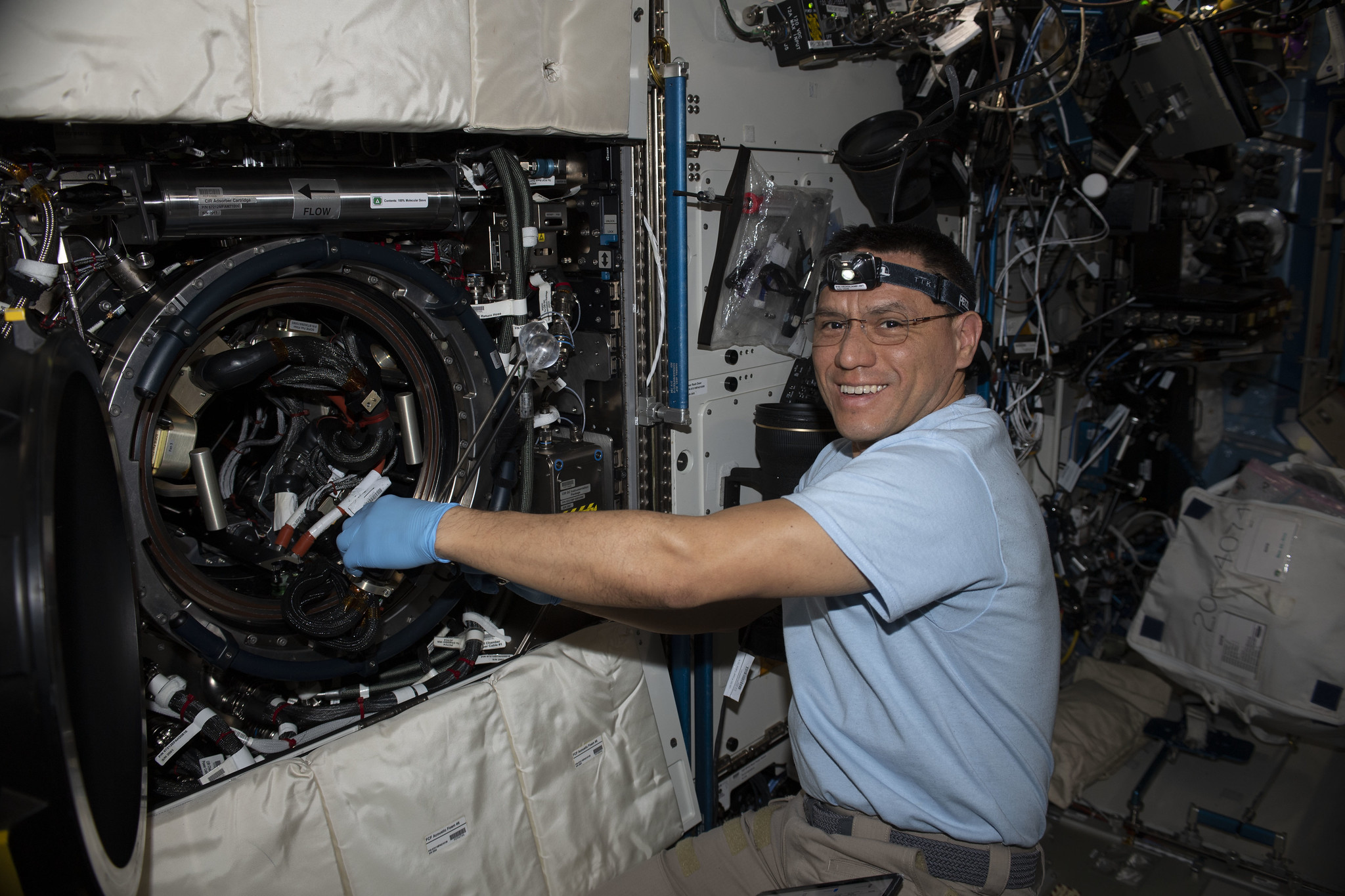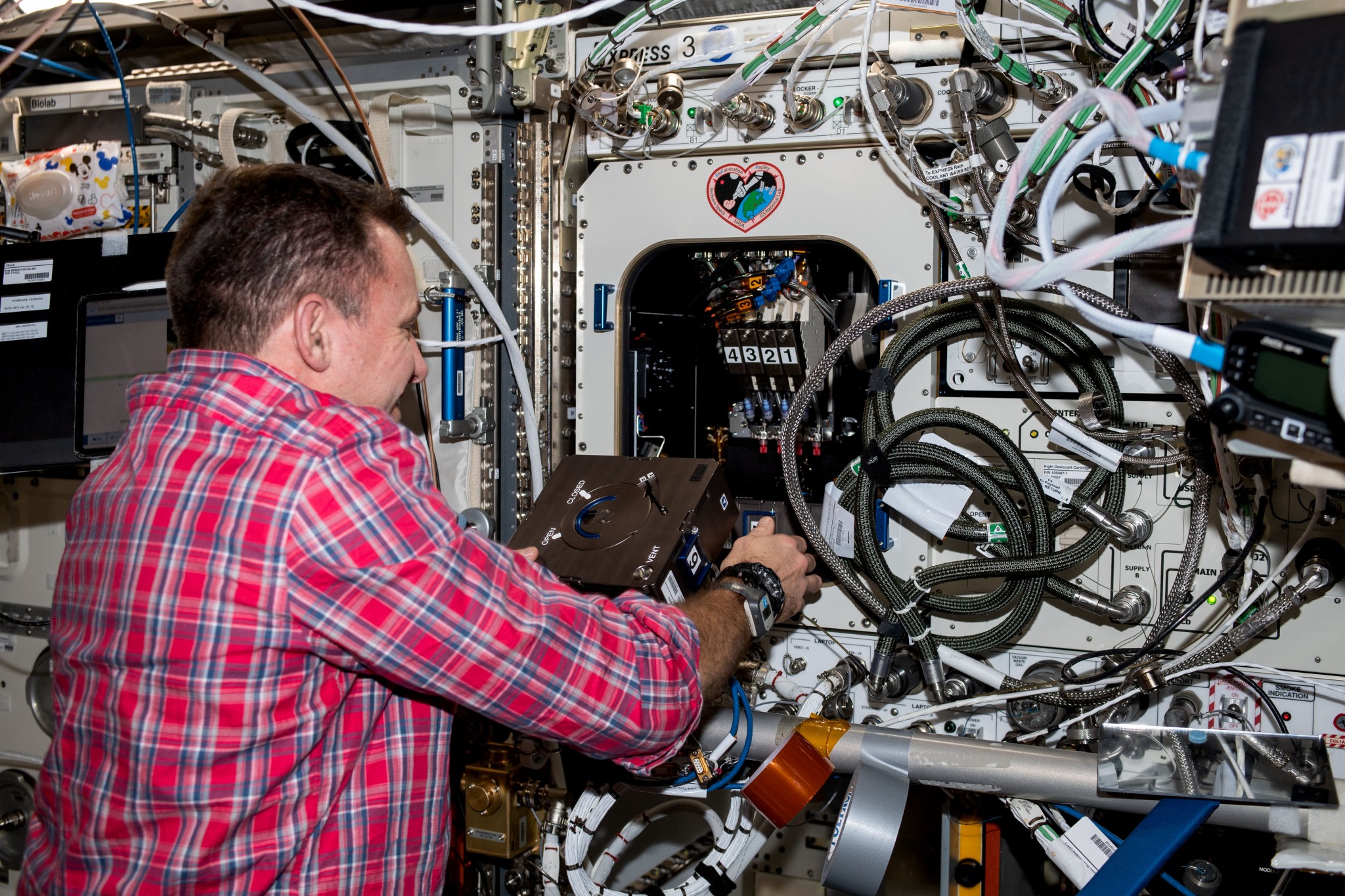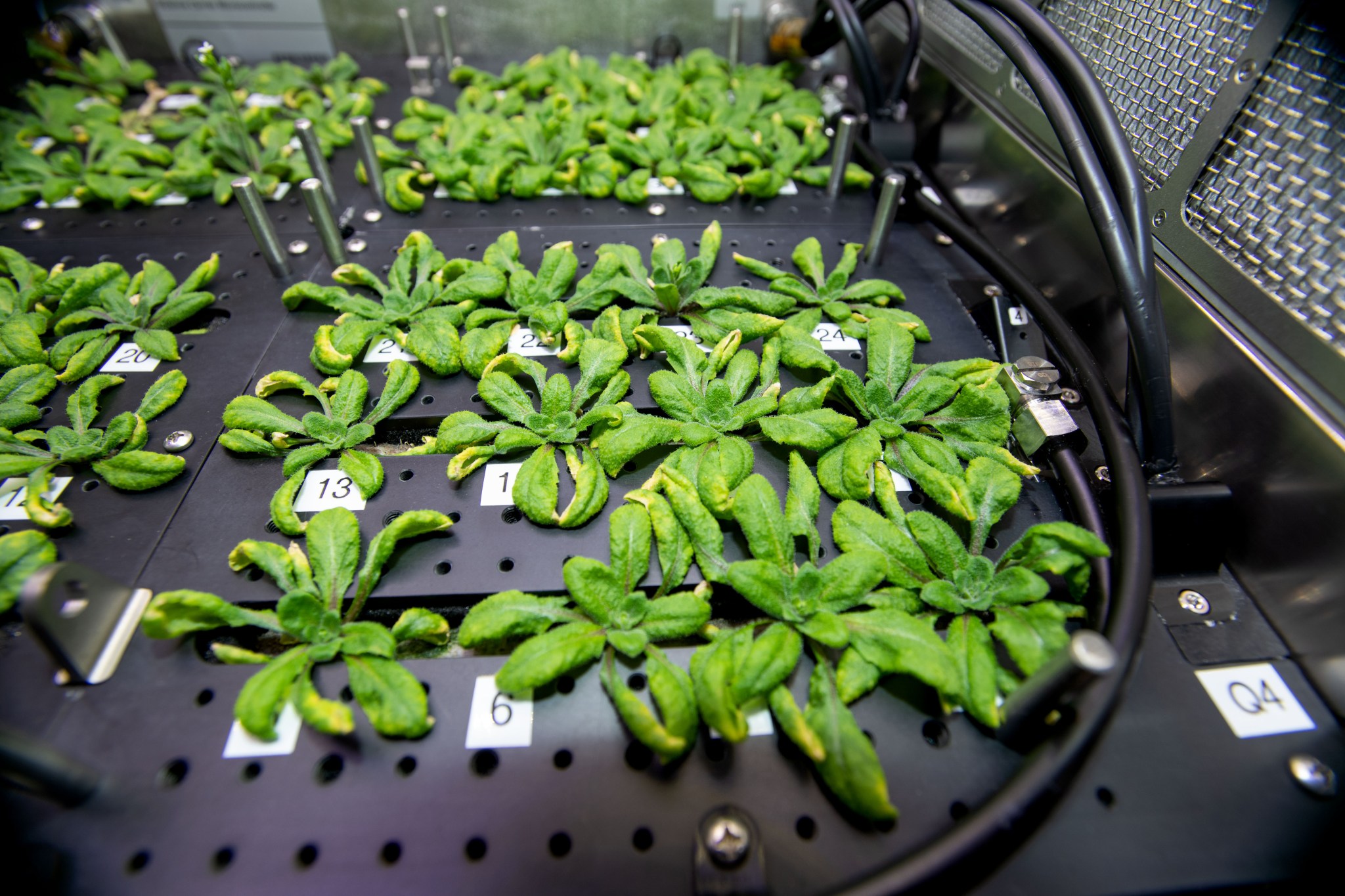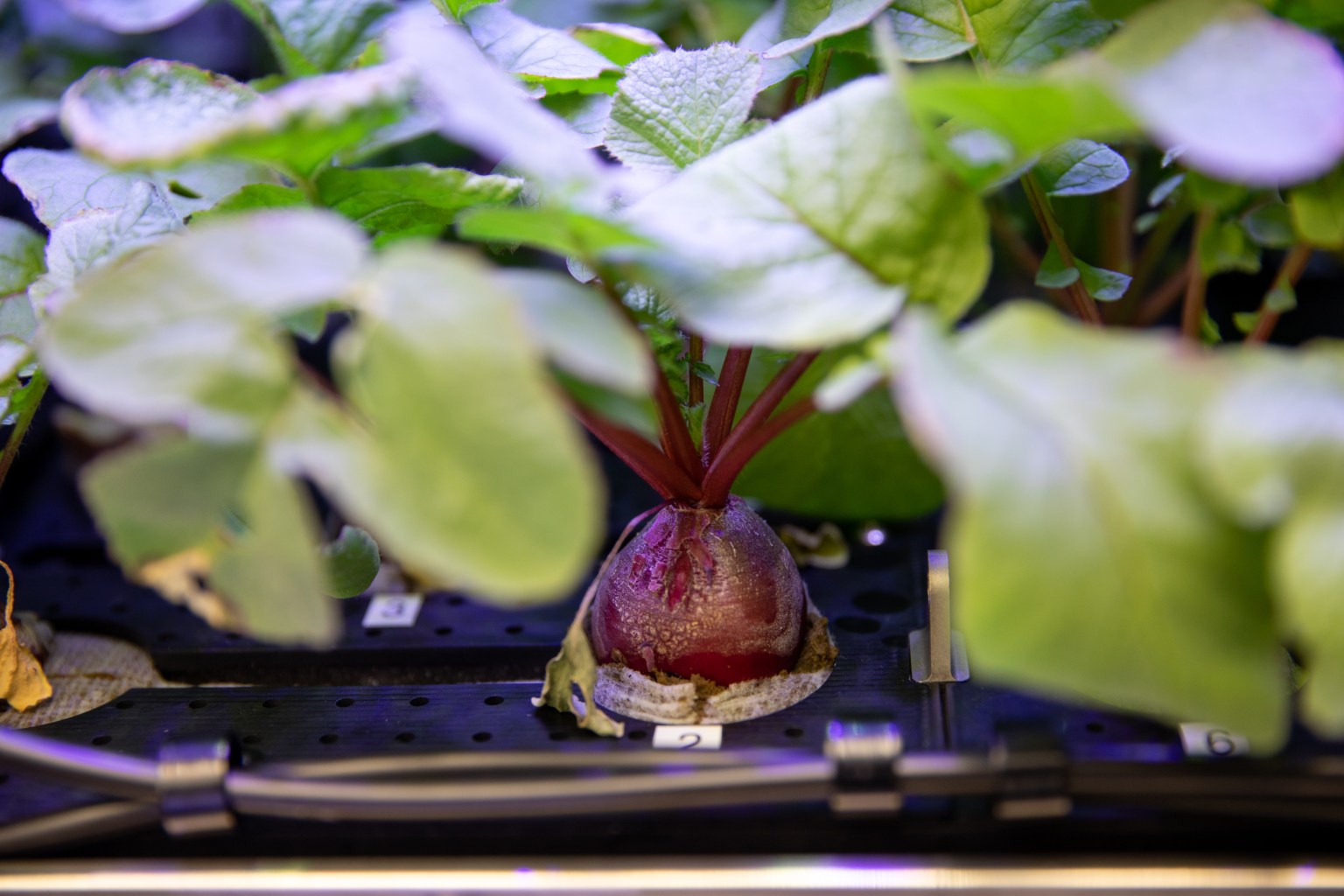Lee esta historia en español aquí.
Crew members aboard the International Space Station conducted scientific investigations during the week of Jan 30 that included examining how fuel temperature affects material flammability, evaluating 3D printing of knee cartilage tissue, and observing liquid sloshing and turbulence in space.
Here are details on some of the microgravity investigations currently taking place aboard the orbiting lab:
Not fueling the fire
SoFIE-Gel studies burning in microgravity, including how fuel temperature affects material flammability. Results could contribute to crew safety on future missions by improving understanding of early fire growth behavior, informing selection of fire-resistant spacecraft cabin materials, validating flammability models, and helping to determine optimal fire suppression techniques. Studying flames in space without the complications of buoyancy also helps improve computer models of combustion for terrestrial applications. Crew members replaced experiment samples and an igniter tip during the week.
Bending the knee
BFF-Meniscus-2 evaluates using the upgraded BioFabrication Facility (BFF) to 3D print a meniscus, or knee cartilage tissue, using bioinks and cells. On its first trip to space in 2019, the BFF successfully printed a partial human knee meniscus. The facility’s upgrades include the ability to control the temperature of its printheads, which enabled bioink formulations that previously were not possible. Musculoskeletal injuries including tears in the meniscus are a leading health issue in the U.S. military. Microgravity enables the printing of tissue samples of higher quality than those printed on the ground and this investigation could help develop new approaches for treating such injuries. During the week, crew members installed and activated the BFF facility and the ADvanced Space Experiment Processor (ADSEP) in preparation for investigation operations.
Whole lot of sloshing going on
FLUIDICS, an investigation from ESA (European Space Agency), evaluates sloshing, turbulence, and other behaviors of liquid in a sphere in microgravity. The spheres serve as models for a spacecraft fuel tank. This investigation could provide insight into measuring fuel volume and may support improvements to the guidance and precision of satellites, improving fuel management and expanding lifespan. This investigation also may help provide a better understanding of Earth’s oceans, including the phenomenon of “rogue waves,” contributing to improved climate prediction systems and optimizing the use of ocean-based renewable energy. Crew members performed runs of the experiment during the week.
Other investigations involving the crew:
- Sphere Camera-1, sponsored by the ISS National Lab, evaluates the performance of an ultra-high-resolution camera in microgravity. Results could support the design and development of cameras with greater resolution, detail, and sharpness for imaging needs on future exploration missions, including to the Moon and Mars.
- Particle Vibration, an investigation from ESA, examines the mechanisms of self-organization of particles in fluids. Results could improve our understanding of fluids with dispersed solid particles, which are used in cooling systems for heat exchangers and solar energy collectors in space and in nuclear reactors and electronics on Earth.
- Plant Habitat-03 assesses whether epigenetic adaptations in one generation of plants grown in space can transfer to the next generation. Results could provide insight into how to grow repeated generations of crops to provide food and other services on future space missions.
- Veg-05 uses the station’s Veggie facility to grow dwarf tomatoes and examine the effect of light quality and fertilizer on fruit production, microbial food safety, nutritional value, taste acceptability by the crew, and overall behavioral health benefits. Growing plants to provide fresh food and enhance the overall living experience for crew members supports future long-duration missions.
- ISS Ham Radio sessions engage students, teachers, parents, and other members of the community in direct communication with astronauts via ground-based amateur radio units. This experience helps inspire interest in science, technology, engineering, and math.
- Standard Measures uses cognition tests, sleep questionnaires, blood samples, and a variety of other data to examine how crew members adapt to living and working in space. Results also help monitor the effectiveness of countermeasures to maintain crew health and well-being, which supports future long-duration missions.
John Love, ISS Research Planning Integration Scientist
Expedition 68






























